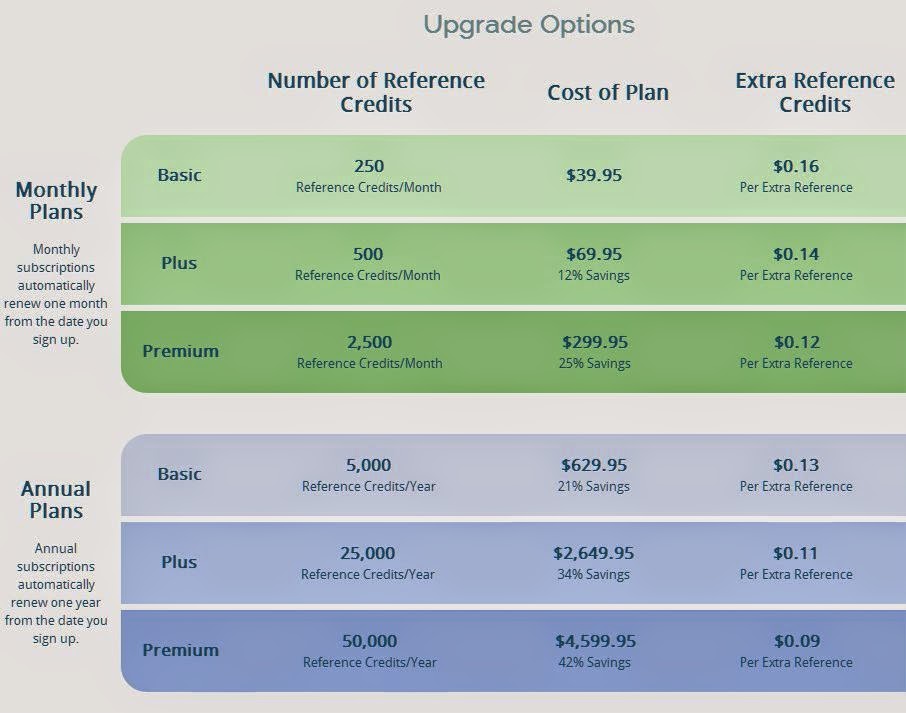Because more and more biomedical journals ask authors to provide DOIs and/or PMIDs, using this tool may save me lots of time, because I can say from experience that my authors are not going to go back and hunt down DOIs if I ask them to. Plus, editing a reference list for style and fixing incorrect details? Yes, I'll still need to read to ensure that all edited references look good. But the less time I have to spend on boring, repetitive tasks such as editing 56 entries in a reference list to fit a particular style, the more time I'll have for the get-down-in-the-mud-and-wrestle editing that I love to do.
Is Edifix a reference manager? No, said Bruce Rosenblum, CEO of Inera (the parent company for Edifix), in a recent interview on the blog of the Association of Learned & Professional Society Publishers:
There are a number of tools on the market for managing bibliographic references; these tools are used primarily by researchers for maintaining reference databases and creating reference lists. Edifix, however, is not a reference manager. Reference managers require structured or fielded reference elements, which for plain-text references—the kind you find in a typical manuscript—involves a lot of cutting, pasting, and re-keying of reference data.
The styles that Edifix can currently follow are
- AMA (AMA Manual of Style)
- Chicago (The Chicago Manual of Style)
- ICMJE–WHO (International Committee of Medical Journal Editors–World Health Organization)
- RIS (Research Information Systems, which supports several reference managers, including Reference Manager)
Once Edifix has run your batch of references, you can use the "Copy References to Clipboard" button and then paste the edited references into your document.
What I really like is that when Edifix can't properly format a particular reference, it tells you why, as in these two examples:
Edifix has not updated ref. 4 "Hart, Cabalo, Bess, et al., 2013" because year differs from the author original, and volume and first page are missing. The PubMed reference is Hart R, Cabalo A, Bess S, Akbarnia B, Boachie-Adjei O, Burton D et al.; The International Spine Study Group. Comparison of Patient and Surgeon Perceptions of Adverse Events Following Adult Spinal Deformity Surgery. Spine (Phila Pa 1976) 2012 Nov
Edifix does not recognize the journal "J Jpn Orthop Ass" (in reference 26 "Izumida, Inoue, 1985"). If this is a valid journal title, please send this reference to journals@inera.com and we will add it to the Edifix journal database [italics and color are mine].
The following comment from Edifix on a problematic reference is invaluable, because I can use it to show my author or publisher client how resourceful I am, and the author can avoid appearing uninformed:
PubMed reports that reference 3 "Van Luit, Van der Molen, 2011" was retracted in "Res Dev Disabil. 2011 Nov-Dec;32(6):3018".
I asked Melissa-Leigh Gore from Customer Support whether Inera has plans to add capabilities to Edifix for more styles, such as Bluebook (The Bluebook: A Uniform System of Citation), Harvard, Turabian, AP (Associated Press Stylebook), Vancouver, ACS (American Chemical Society), AMS (American Mathematical Society), CSE (Scientific Style and Format: The CSE Manual for Authors, Editors, and Publishers), and ASA (American Sociological Association). She replied:
First, our ICMJE style is sometimes also referred to as Vancouver, so that may be of interest. We are planning to add CSE imminently, since we already have the template built. (We do very well with STM content in particular.) I would expect that to roll out in the next couple months. In the longer term, we are aiming to offer Citation Style Language [CSL] support, which would open up over 7,000 style templates for users to apply to their bibliographies, presumably including some of the others you indicated. There is more info here. The CSL integration does not yet have an expected launch date.
Now all I have to do is decide which pricing plan will work for me, because I can already see that this software is going to save me time, which is money:
I have shown here only the plans that I will consider. I'll likely start with the monthly basic plan and then move up to the monthly plus plan if necessary. But there are also corporate plans, called Enterprise Plans, for publishers and other large organizations.
You can follow @Edifix on Twitter for tips about product use.
How did I find out about Edifix? I saw an ad for it in the July–August 2014 issue of The Freelancer, the newsletter of the Editorial Freelancers Association. That's an example of one of the ways it pays to be a member of a profession-related organization.
Have you tried Edifix? If so, please describe your experience with it in the comments.
[Updated at 5:13 p.m. Eastern time on August 27, 2014:] I asked customer-service rep Gore, "If I need to run 400 references through Edifix, can I do that all at once? Or does Edifix need to be served smaller chunks at any one time?"
She answered, "Technically, yes, we can run 400 references at once under perfect circumstances. However, this requires having a connection open to our reference processing server for a long time, and sometimes things can go wrong (the internet connection drops out, you click out of the page accidentally, etc). Based on that, presently we recommend not exceeding ~200 references per job for best performance."
work tools references style copyeditor copyediting editor editing publishing EditorMom

